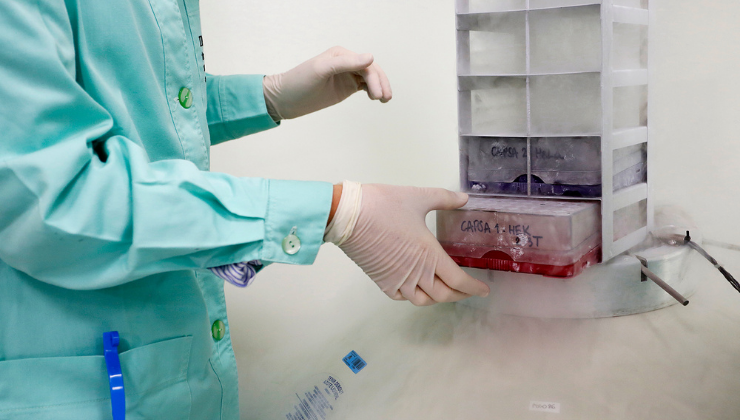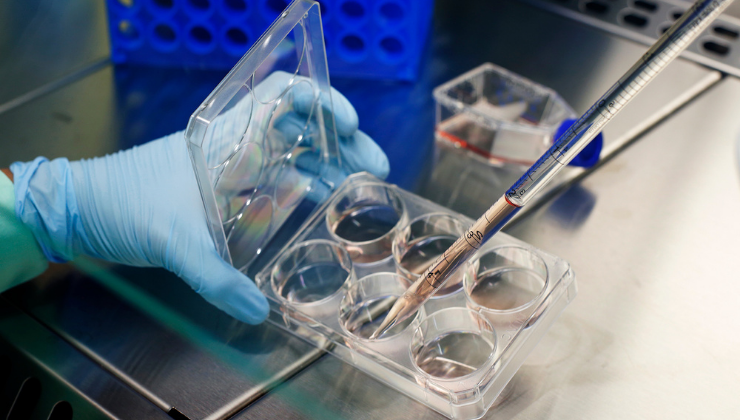The IMO Foundation and the Ocular and Stem Cell Translational Research Section of the prestigious National Eye Institute NIH in the United States have recently signed an agreement. Both entities are working on the development of studies aimed at improving the diagnosis and treatment of retinal dystrophies, a group of rare diseases which constitute the main cause of hereditary blindness in developed countries.
The first outcome of the agreement has been the cession, by the IMO Foundation, of two unique cellular models in the world, developed in the Molecular Biology Laboratory of the IMO Foundation, located in IMO Grupo Miranza (Barcelona). From this laboratory, the research team has been working for two years on a pioneering project on an international scale, the aim of which is to analyse in detail the genetic mutations that cause some retinal dystrophies, and to test new gene and cell therapies to restore vision or halt its loss in patients who currently lack treatment.
Promotion of international scientific collaboration
The first phase of this research has focused on obtaining fibroblasts from skin biopsies of various patients suffering from different types of retinal dystrophies. These cells, later reprogrammed into induced pluripotent stem cells (iPS cells), are cellular models that have made it possible to begin the functional study of genetic mutations in these patients, enabling the testing of the effectiveness of new therapeutic tools.

A member of the research team handles samples in the IMO Foundation laboratory.
The IMO Foundation research team has already succeeded in generating 7 new iPS cell lines from skin samples from 7 patients affected by different types of retinal dystrophies, including Stargardt Disease and Retinitis Pigmentosa. These cellular models, unique in the world, have been characterized and published in international scientific journals of high impact and have been registered in the Spanish National Bank of Cell Lines and in The Human Pluripotent Stem Cell Registry so that the international scientific community can benefit from the discovery.
This is the case of the National Eye Instituye, which following the publication of these results, contacted the IMO Foundation to request two of these new cellular models, specifically from patients with mutations in the ABCA4 gene and affected by Stargardt's disease.
Research on retinal dystrophies
The IMO Foundation is currently working on obtaining retinal cells from these seven stem cell lines, as well as correcting their pathogenic mutations using CRISPR-Cas9 technology, in order to obtain healthy cells from the patient himself to be used as a therapeutic tool.

The MO Foundation team works on obtaining healthy cells from samples of affected patients.
If the study proves that this in vitro tested gene therapy works and is safe to stop vision loss, the door will be opened to its future application in patients. It will also lay the foundation for cell therapy, which consists of implanting healthy cells into affected tissues. In this way, it will be possible to design personalised protocols for the treatment of each type of mutation in each patient, "who we will be able to treat in the future with cell therapy, which will allow vision to be recovered", explains Dr. Esther Pomares, the geneticist responsible of the project.
Hence the importance of offering the models obtained by the IMO Foundation research team to the international scientific community. According to Irene García, director of the IMO Foundation, "collaboration is not only key to exchanging scientific knowledge, but is also essential for developing research projects. In fact, the milestones achieved by the IMO Foundation are the result of the joint action of patients, geneticists and ophthalmology professionals, as well as the constant support of partners, donors, collaborators and society in general, which allows us to continue our research".
